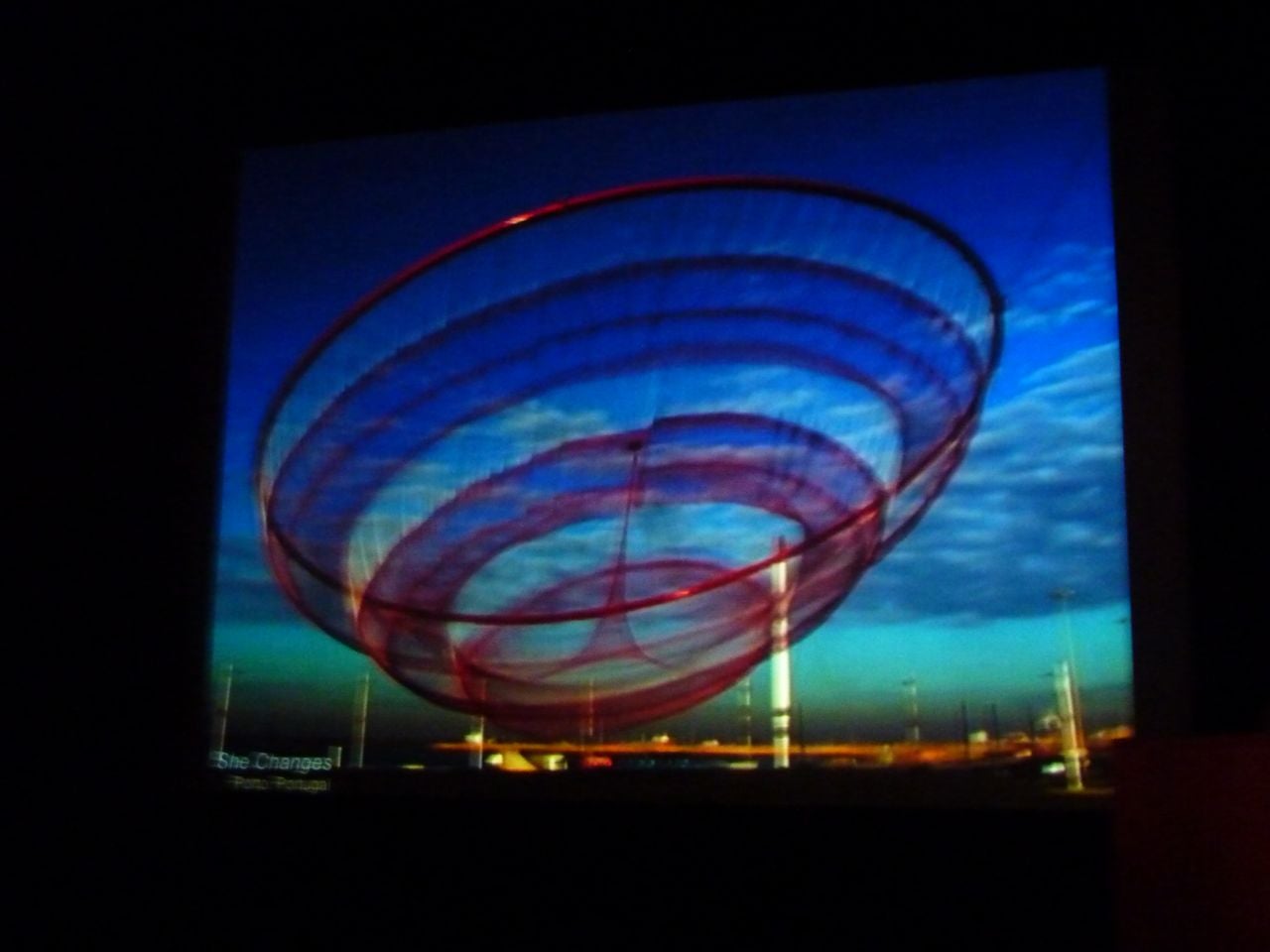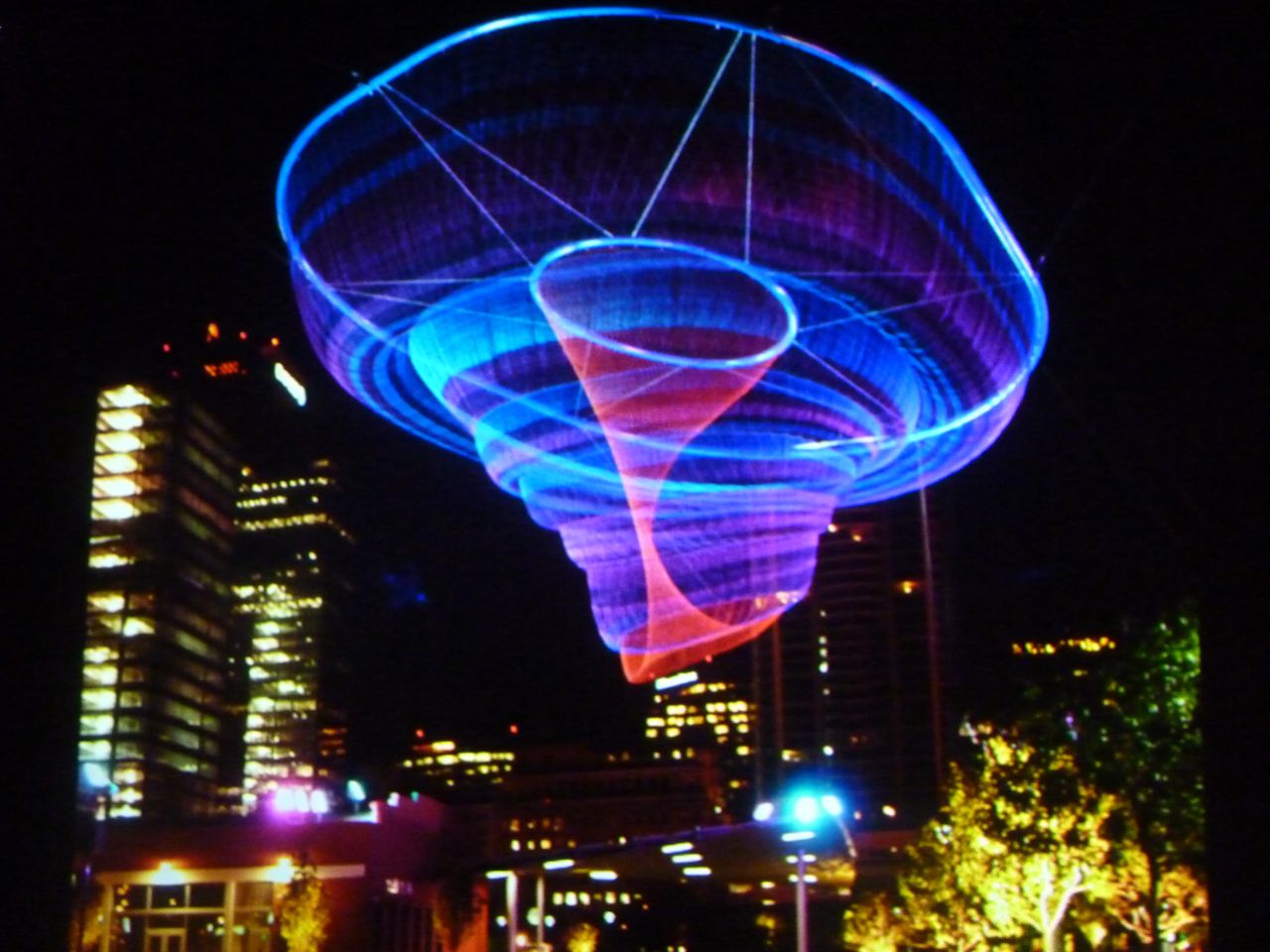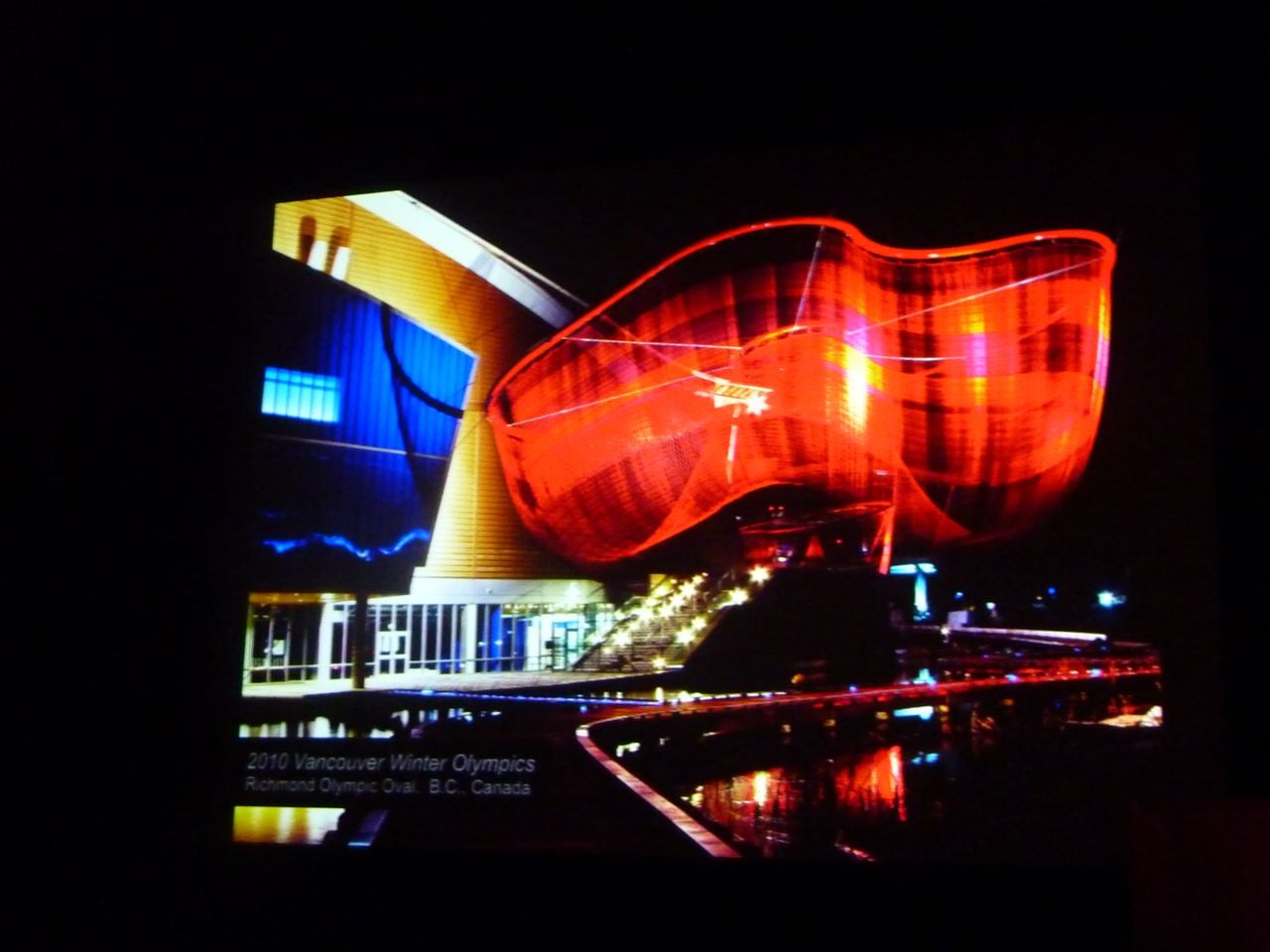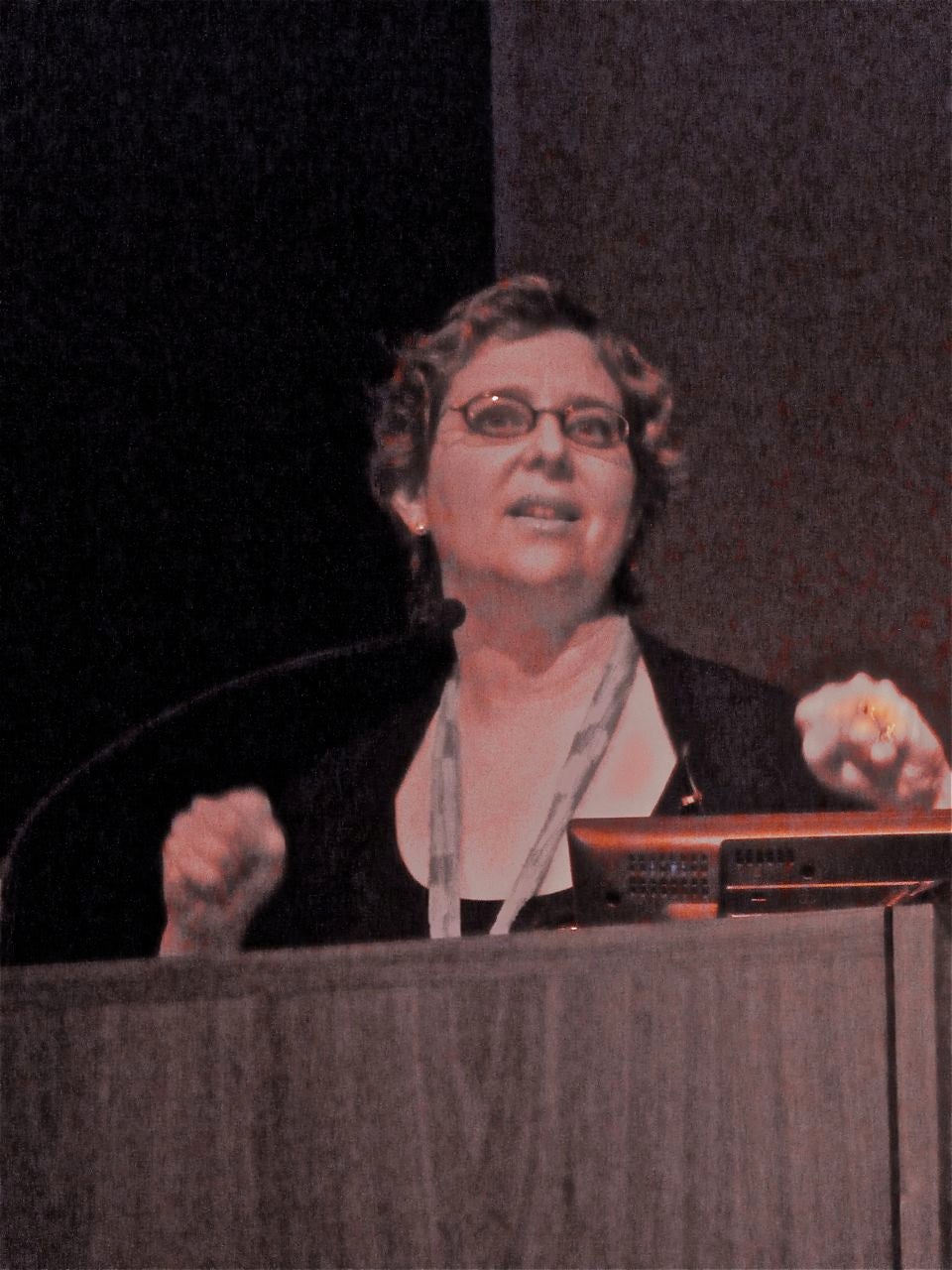A closer look at two exciting public art projects
By now, anyone who’s interested has had ample opportunity to get a sneak preview — and at least a glimmer of understanding — of the ambitious new public art project recently approved for Dilworth Plaza.
But Monday night, the Fairmount Park Art Association scored a real coup by flying in the work’s creator, just-announced Guggenheim Fellow Janet Echelman, who offered a detailed look at her vision for the space.
Echelman’s presentation capped the Association’s brief annual meeting, held at the Philadelphia Museum of Art. Executive Director Penny Balkin Bach began by highlighting the group’s recent activities and plans (see below) before Susan K. Weiler, an Association trustee and partner at OLIN — the landscape architect for the Dilworth project — introduced the 45-year-old Boston-based sculptor.
Echelman traced her trajectory as a painter who found herself learning batik in Bali for a decade, served a stint working with the artist Robert Rauschenberg, garnered a Fulbright to study in India, and eventually started experimenting with sculpture. Inspired by local fishermen, she settled on net as her medium, seeing in it, she said, “a new approach to creating volumetric spaces without the heavy material.”
Her work eventually caught the attention of planners looking to redevelop a stretch of Porto, Portugal’s waterfront and Echelman’s public art career was off. After doubting whether she could transform her ephemeral art into something that was “permanent, engineered, [and] durable,” Echelman successfully unveiled — three years and two children later — “She Changes” in Porto in 2005.
A billowing 50,000-square-foot net that weights one ton and resembles an upside down flying saucer, the piece was credited with being the first monumental public sculpture to use a soft and flexible material. It set a signature for Echelman, and she’s since created similar pieces in Phoenix, Denver, and Vancouver. “But what do you do when someone says, ‘you can’t do anything you’ve ever done before’?” she asked at Monday evening’s presentation.
For that demanding Philadelphia request, she continued, she started by trying to understand the gestures and historic legacies of the site. “I did a lot of homework,” she told PlanPhilly by phone from her office, where she was catching up between her Philadelphia appearance and jetting off to San Francisco to officially introduce her latest commission. “I didn’t know what the piece would be about or where on the site it would be located,” she continued. “I just thought it shouldn’t compete with the architecture, and that it should reference history.”
The upshot: water would play a great role because of the site’s beginnings as a waterworks. After discussions with the Center City District, Echelman also began thinking about Philadelphia’s industrial heritage and that in turn led to the idea of connecting the work to the underlying transit infrastructure.
Tying these three threads together is a new material that Echelman’s studio calls “dry mist.” “It’s never been used before and so we’re working everything out by trial and error,” she told PlanPhilly. “It’s the fine-tuning of air flow with very tiny atomized water particles.”
Integrated as part of the fountain that’s so central to the Plaza’s redesign, Echelman’s dry mist — colored by green, blue, and orange lights (echoing, respectively, the paths of SEPTA’s trolley, el, and Broad Street lines) — can be manipulated not only by the passage of trains below, but by pedestrians above. Instead of being suspended from the air like her other works, then, this one will start at ground level and disperse into the air.
But in its transparency and emphasis on movement, the work takes on qualities of her other work, Echelman says. “There’s a direct link and growth from my earlier work,” she told PlanPhilly “I’m working with invisible forces in the environment and revealing them. We’re opening a whole new kind of interaction,” she continued, “with not only the wind but of a kind of human culture. The movement of trains is not natural, but it’s intricately connected to how we experience the urban environment.”
The Dilworth project will be her most complex yet, Echelman confirms. “There are a great number of careful interfaces — there’s all kinds of systems that have to be coordinated.” It’s fair to say that the still untitled piece promises to be Philadelphia’s most ambitious public sculpture, as well. But as yesterday’s meeting revealed, the Fairmount Park Art Association has been busy on other matters, too.
One of them is another large-scale (albeit temporary) project called “Open Air,” set to debut in September 2012, and run for the entire month. Created by Montreal-based Rafael Lozano-Hemmer, the work — a so-called “vectorial elevation” — will position two dozen robotics-controlled searchlights on top of buildings along the Benjamin Franklin Parkway and will, Bach says with glee, be “deliciously complex.” (At last night’s meeting, she was quick to reassure audience members that resident’s windows and airplane and bird flight patterns would all be considered as the work moves towards actualization.)
Light is just the medium for Lozano-Hemmer’s real interest: Marcel Duchamp’s notion of the spectator completing the work of art. In this case, visitors and Philadelphians will be able to direct the light’s patterns using tools like GPS and smart phone apps. The project marks the first time that the city has pursued a temporary installation of this nature, says the Association’s Jennifer Richards. “It represents a few things that really interest us these days,” she says. “We’re wetting our feet with new media applications and with creating what we hope can be incredibly iconic experiences.” The hope, she adds, is to inspire an appetite — and the funding — for more of such efforts.
In kicking off the meeting with this project and ending it with Echelman’s, the Association offered a one-two punch that promises a great deal of excitement for the city in the coming 18 months. Some might decry the expenditures involved and others might fuss over questions of artistic merit, but in actuality citizens of all stripes should welcome them as image-enhancers, coffer-boosters, dream-stirrers, and joy-inducers.
Contact the reporter at jgreco@planphilly.com
WHYY is your source for fact-based, in-depth journalism and information. As a nonprofit organization, we rely on financial support from readers like you. Please give today.







